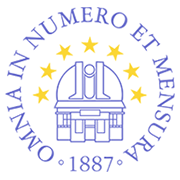FITTING OF THE CURRENT SIGNAL OF THE PULSED TOWSEND EXPERIMENT WITH THE GRADIENT DESCENT ALGORITHM
Publication
BOOK OF ABSTRACTS AND CONTRIBUTED PAPERS - International Meeting on Data for Atomic and Molecular Processes in Plasmas: Advances in Standards and Modelling, Page 75-76, https://doi.org/10.69646/aob241121
BOOK OF ABSTRACTS AND CONTRIBUTED PAPERS - International Meeting on Data for Atomic and Molecular Processes in Plasmas: Advances in Standards and Modelling, November 12-15, 2024, Palić, Serbia, Edited by Vladimir A. Srećković, Aleksandra Kolarski, Milica Langović, Filip Arnaut and Nikola Veselinović
Published by: Institute of Physics Belgrade
Published: 26. 11. 2024.
Abstract
The Pulsed Townsend experiment is used for determining the transport coefficients for a swarm of electrons in gases (see e.g., Casey 2021, De Urquijo 2007, Haefliger 2018). These transport coefficients include drift velocity, longitudinal diffusion and the effective ionization coefficient. In general, these transport coefficients are determined by fitting an analytical expression, in which the current signal is expressed in terms of these transport coefficients, to the actual current signal that is measured in the experiment by a nonlinear curve fitting procedure. In the literature, different analytical expressions for the current signal are used by different authors, and the employed nonlinear curve fitting procedures are not always publicly available. For this reason, a systematic study of the fitting of the current signal of the Pulsed Towsend experiment is long overdue, and this work makes first steps in that direction.In this contribution, we investigate the applicability of the gradient descent algorithm for the fitting of the current signal of the Pulsed Towsend experiment. The gradient descent algorithm is a method for unconstrained mathematical optimization, that is commonly used to train machine learning models including linear regression, logistic regression, neural networks, and support vector machines (see e.g. Bishop 2006). This algorithm minimizes the desired differentiable multivariate function by making repeated steps in the direction opposite to the gradient.In this contribution, we investigate two different analytical expressions for the current signal from the Pulsed Towsend experiment. We have defined two machine learning models that implement these expressions in the torch.nn.Module class from the PyTorch library. PyTorch is an open-source library for machine learning, data science, and artificial intelligence, that has been originally developed by Meta AI (see e.g. Ketkar 2021). The transport coefficients, that are determined from the cur ... - FULL TEXT available in PDF.




